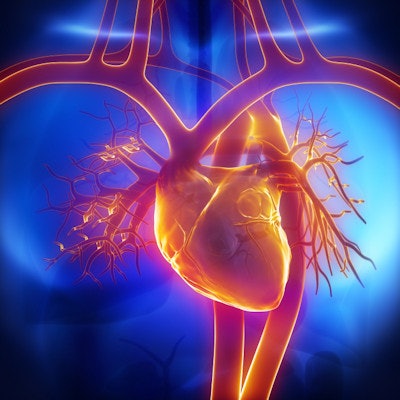
Pulmonary CT angiography (CTA) helped clinicians better understand the cause of death in the case of a 33-year-old woman in China who died after receiving vaginal injections of hyaluronic acid (HA) and collagen, according to a review published October 14 in Aesthetic Surgery Journal.
The woman died after the procedure caused pulmonary complications, wrote a team led by Dr. Yang Yang of General Hospital of Southern Theater Command in Guangzhou City, China.
"The present case emphasizes that surgeons and other healthcare providers must be aware of the risk of serious pulmonary complications and even death associated with the use of these two widely used injectable fillers," the group wrote.
The use of hyaluronic acid and collagen as fillers in plastic and reconstructive surgery has increased -- 58.4% since 2014 and 12.2% since 2017, according to the American Society for Aesthetic Plastic Surgery, the authors noted. But use of the materials can have adverse effects and local reactions, such as bruising, skin reddening, or swelling.
Even more serious reactions are possible, and especially with the increasing popularity of genital plastic surgery, "the excessive and ultratherapeutic use of HA and collagen warrants special attention," they wrote.
In the case from China, the woman was admitted to the emergency department in March 2019, three hours after receiving 13 injections of hyaluronic acid (1 mL each) and two injections of collagen (1 mL each) into her vaginal wall in an effort to firm it after multiple childbirths. She had undergone bilateral breast augmentation under general anesthesia without any symptoms four days before receiving the hyaluronic acid and collagen injections.
The woman's main complaint was difficulty breathing, which had begun almost immediately after the injections; giving her oxygen did not help, Yang's group wrote. She had low blood pressure, and emergency department clinicians used dopamine and fluids to try to boost it.
A CT scan of her chest showed fluid in the lower lobe of the left lung, enlargement of the right atrium and ventricle, and "uneven development of the bilateral inferior lobar artery with filling defects," the authors noted. Pulmonary CTA with 3D reconstruction showed "continuous interruption of pulmonary artery branches of the posterior basal segment of the right lower lobe."
"The patient appeared acutely restless and tachypneic, accompanied by intermittent cough, dizziness, fatigue, and cyanosis of the lips," they wrote.
The woman's pulmonary symptoms rapidly worsened: She had an initial cardiac arrest seven hours after admission into the emergency room and a second soon after. She died nine hours after receiving the injections, the group reported.
Based on the CT results and the course of the disease, "the cause of death was respiratory and circulatory failure caused by progressive exacerbation of pulmonary embolism," Yang and colleagues wrote. "The patient's risk profile for pulmonary embolism prior to the breast augmentation was 1 [based on the Caprini Score for Venous Thromboembolism]. ... Thus, it was postulated that the injection of HA and collagen caused acute pulmonary embolism, obstructive shock, and anaphylactic shock."
The main cause of the woman's death was the "poorly regulated procedure of injection of HA and collagen into the vaginal wall," they wrote.
"Clinicians performing vaginal injections should be scrupulous and recognize that the most widely used injectable agents can be a cause of potentially fatal pulmonary complications," Yang and colleagues concluded. "For patients seeking plastic surgery and treatment, quick success and short-term benefits are usually not the best choices."





















